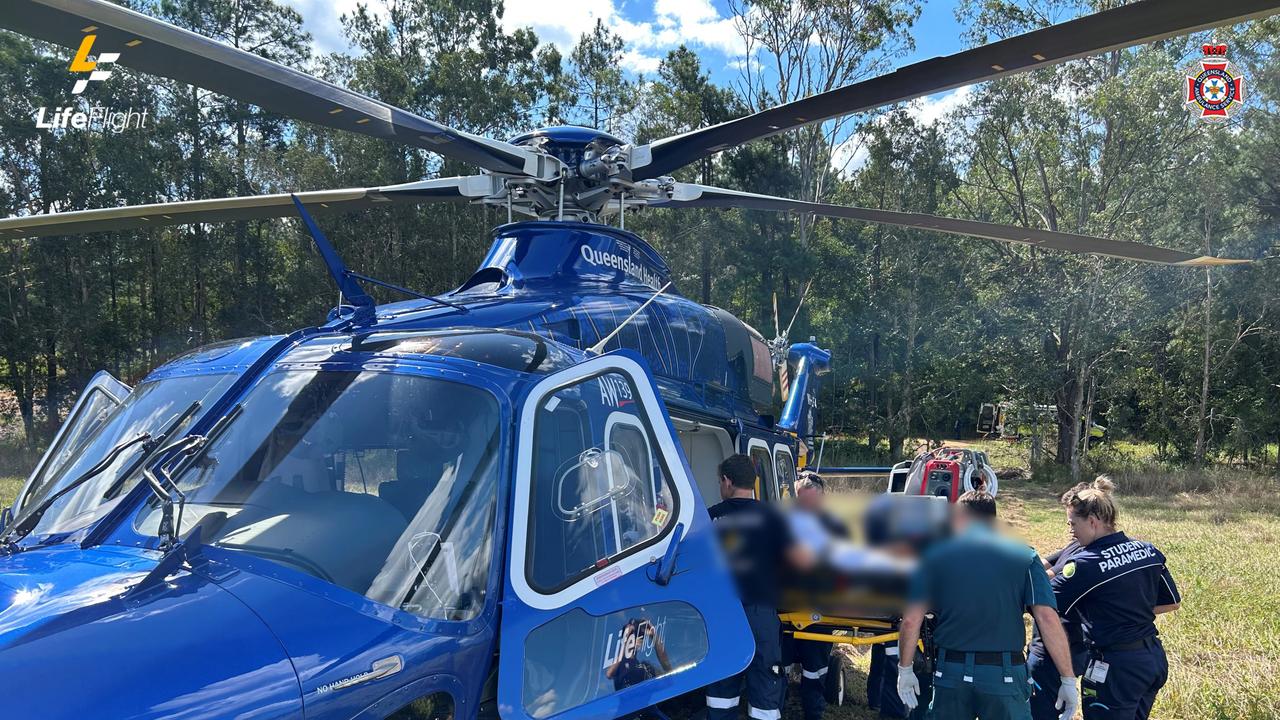John Ebbels fears he will die before he is given housing during a Covid housing scarcity
A terminally ill Coast man says he is afraid he will die on the street if his “desperate” pleas for housing are not heard as figures reveal demand for social housing far outstrips supply.
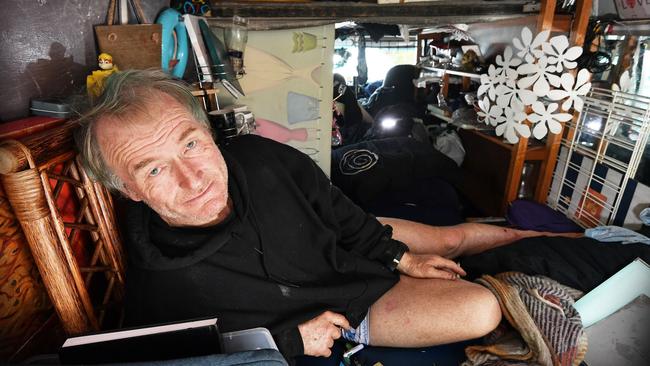
Community News
Don't miss out on the headlines from Community News. Followed categories will be added to My News.
A terminally ill Sunshine Coast man says he is afraid he will die on the street if his “desperate” pleas for housing are not heard.
The revelation comes as the number of registrations for affordable housing on the Sunshine Coast and Noosa rises to almost 1800, and yet only 339 new dwellings are expected to be built in the region, government figures show.
John Ebbels has been forced to seek shelter in a Maroochydore car park after living on the streets for three years.
The former Mooloolaba tuna boat captain of 15 years had to stop working after he was diagnosed with a rare lung disease in 2012.
Since then, he endured ongoing trauma including another lung tumour diagnosis, a heart attack and the death of his father.
“I’ve worked all my life up until I got sick and my whole life has just crumbled around me and I’ve just been trying to survive ever since,” he said.
Mr Ebbels said he feared he would not survive on the street.
“I’ve got a terminal illness and if this Covid thing comes anywhere near me I’m dead meat,” he said.
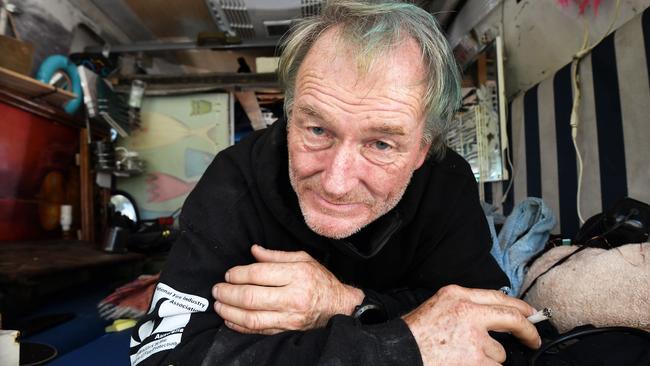
The Daily has launched the Locked Out campaign to put the spotlight on the region’s housing affordability plight.
Figures from the Queensland Housing Department show almost 1728 people on the Sunshine Coast and 61 people in Noosa were registered for state housing.
In June 2019, there were 1109 applications on the Coast and 86 in Noosa.
A government spokeswoman said 296 of those applications had been classified as high or very high need households, which was expected to increase due to the Covid-19 pandemic increasingly driving people into financial difficulties.
“Importantly, many of those who have registered interest on the housing register have already been assisted to address their immediate housing needs with alternative solutions,” the spokeswoman said.
“This can include bond loans, rental grants and RentConnect through their local housing service centre to help people secure a home in the private rental market.”
Coast2Bay chief executive Andrew Elvin said more needed to be done to address the housing issues in the region, including by the public and private sectors.
He said the affordable and community housing organisation had received 30 to 40 per cent more referrals than normal throughout Covid.
“We have not been able to meet all of these requests,” he said.
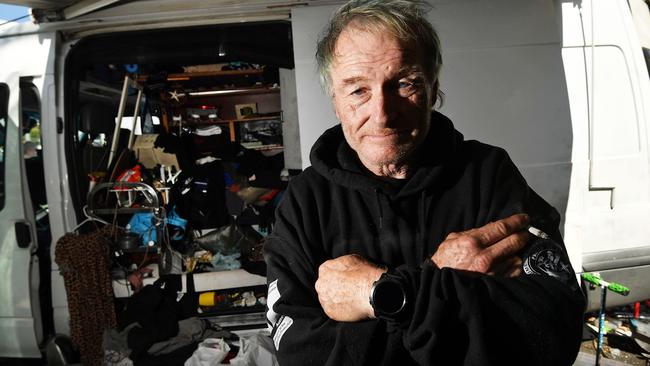
Mr Ebbels said he had cried at the Housing Department counter, pleading for help but said staff were overwhelmed with people in need.
“I don’t want to be selfish but how come people that are perfectly healthy are getting housed over me? I’m desperate and we are really struggling,” he said.
“Since Covid has come on we are getting more and more homeless people. We see that many new faces every day.
“They are coming in droves. It’s scary actually.”
Housing affordability issues are expected to further plague the region as the National Rental Affordability Scheme draws closer to an end and the Queensland Government’s new state housing projects are years away from completion.
NRAS was axed by the federal government in 2014 and with no new applicants being accepted to the scheme it is due to be phased out fully by 2026.
The Sunshine Coast has 3084 social housing dwellings and Noosa has 420.
The government spokeswoman said 137 new homes would be built across the region in the next four years as part of a statewide $36.6m investment, supporting the equivalent of 118 fulltime jobs.
This is in addition to 197 new social housing homes that have already commenced under the Queensland Housing Strategy 2017–2027 and five new social housing homes already started under Works for Tradies.
Mr Elvin said the number of new dwellings was modest but “a big step forward”.
“The new investment in capital projects will never be enough to meet all the needs of the Sunshine Coast unless new and innovative models are included to increase affordable housing on the Sunshine Coast and Queensland more generally,” he said.
Mr Ebbels said he and his girlfriend Julie Wylie tried to help as many homeless people as they could but have lost all hope.
“I have had letters from doctors and surgeons saying I’m a red flag and need to be off the streets, but no one can help us,” he said.
“Personally, I’m not travelling very well but no one wants to give us any help. We just get passed down the line.
“We can’t see any way out.”
SUNSHINE COAST’S MOST AFFORDABLE SUBURBS REVEALED
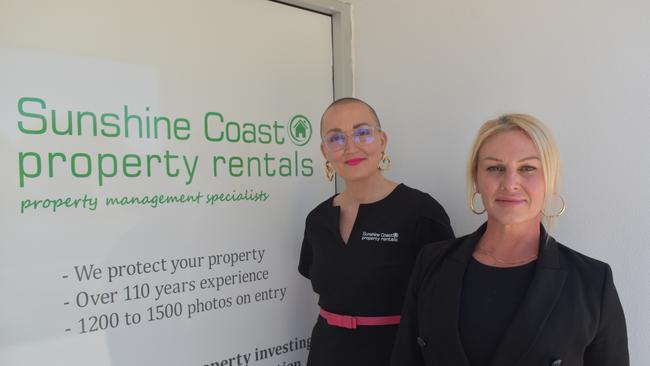
It comes as the Sunshine Coast’s most affordable suburbs for renters have been revealed.
Sunshine Coast Property Rentals office manager and rental expert Jamima Suter said all areas of the region were in high demand which led to a price increase but there were still a few suburbs where renters can find more affordable listings.
“All suburbs on the Sunshine Coast are highly in demand, there is not one greater than the other,” she said.
“What we are finding is the average income of all applications is approximately 52,000 per annum.”
As of September 10, their more affordable properties included three bedroom houses up to $450 per week in Beerwah, Glass House Mountains, Forest Glen, Nambour and surrounding suburbs Burnside, Nambour Heights, Highworth, and parts of Maroochydore.
Between $475 and $650 per week were three bedroom listings in Little Mountain, Meridan Plains, Peregian Springs, Buderim, Caloundra and Caloundra West, Sippy Downs, Nambour, Palmwoods, Alexandra Headlands, Maroochydore and Mountain Creek.
“We are highly committed to ensure that we assist all Sunshine Coast residents to obtain housing,” Ms Suter said.




